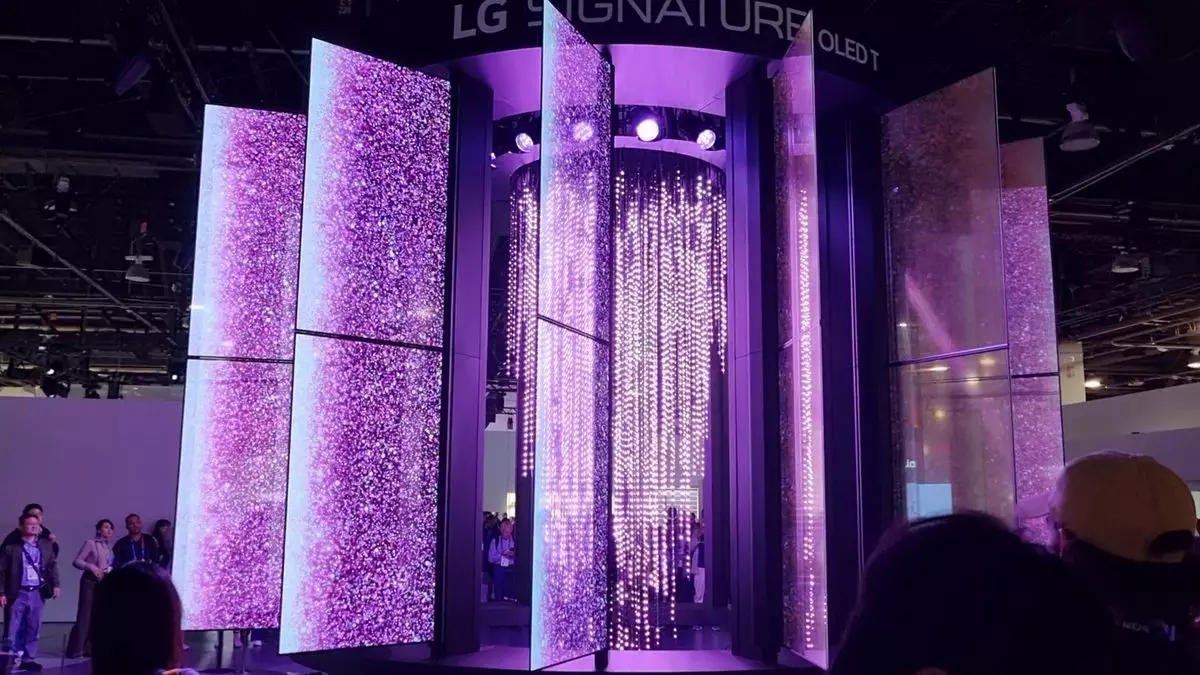The technological landscape is ever-evolving, and with it comes innovations that often raise eyebrows and incite debate among enthusiasts and skeptics alike. Transparent displays are one such innovation that has garnered attention, yet also skepticism due to their practicality. Initially, many in the tech community, including myself, viewed transparent screens as little more than flashy gimmicks designed to attract attention at trade shows. They seemed impractical for everyday use and offered questionable utility in most home or business environments.
At CES 2025 in Las Vegas, there was a palpable buzz surrounding these transparent screens. Many professionals and tech lovers flocked to booths showcasing these eye-catching devices. The visual appeal is undeniable; they captivate audiences and spark curiosity. However, as they draw in onlookers, one must ponder the lasting value these displays provide compared to standard screens. Can the aesthetics truly outweigh functionality?
During my recent visit to CES 2025, I was unexpectedly pulled into the magnetic allure of an LG transparent display. The presentation was nothing short of spectacular, featuring a 77-inch signature OLED T display center stage, artfully mounted and synchronized with a rotating chandelier. This display was not merely a piece of technology; it was an immersive spectacle, merging art with engineering. In that moment, the critical voice in my head faltered as I found myself entranced, momentarily forgetting my skepticism.
However, reflecting on that experience brings us back to the fundamental question: What is the point of such innovation? While visually stunning, these displays, priced at an eye-watering $60,000 each, serve primarily as conversation starters. They showcase what is possible in the realm of design but do little to fundamentally change consumer habits or improve technological functionality.
In the same breath, I also encountered another display that sparked my excitement—a colossal 163-inch Micro LED TCL X11H Max. This powerhouse promises an impressive nanosecond-level response time and a staggering brightness of 10,000 nits. The thought of gaming on such a massive canvas sends shivers down the spine of any gamer. The immersive experience offered by this display could define an entirely new level of engagement, particularly for high-paced games like Forza Horizon 5 or thrilling horror films.
Yet, as thrilling as this technology seems, the price tag—$110,000—brings one crashing back to reality. While the visual spectacle is appealing, one must question whether such an investment is justified. Are we prepared to spend six figures for a gaming display, or does common sense suggest that there are more practical avenues to explore with that money?
With both transparent and ultra-clear displays making a splash at CES 2025, it’s essential to maintain a balanced perspective. In the world of consumer electronics, aesthetics play a significant role in design and function. Manufacturers are competing not only for superior functionality but also for unique visual appeal that distinguishes their products in a crowded marketplace.
However, the critical voice here underscores a significant concern: does a stunning design equate to genuine consumer value? The irony is that while these displays captivate audiences, they often do so at the expense of practicality. The transparent screens, for instance, leave much to be desired in terms of everyday application. They may dazzle today, but how often will they truly enhance the user experience in a meaningful, consistent way?
As we navigate an increasingly visually driven technological environment, it’s essential to strike a balance between innovation and functionality. The siren call of cutting-edge design should not cloud judgment regarding practical application in our daily lives.
While transparent displays shine brightly in tech expos like CES 2025, we must question their actual viability for consumers. The future should embrace innovations that enhance our lives rather than merely serve as elegant pieces of art. Let’s celebrate breakthroughs that possess not only allure but also practical utility—a future where technology seamlessly blends into our everyday experiences, rather than standing as a decorative novelty.


Leave a Reply